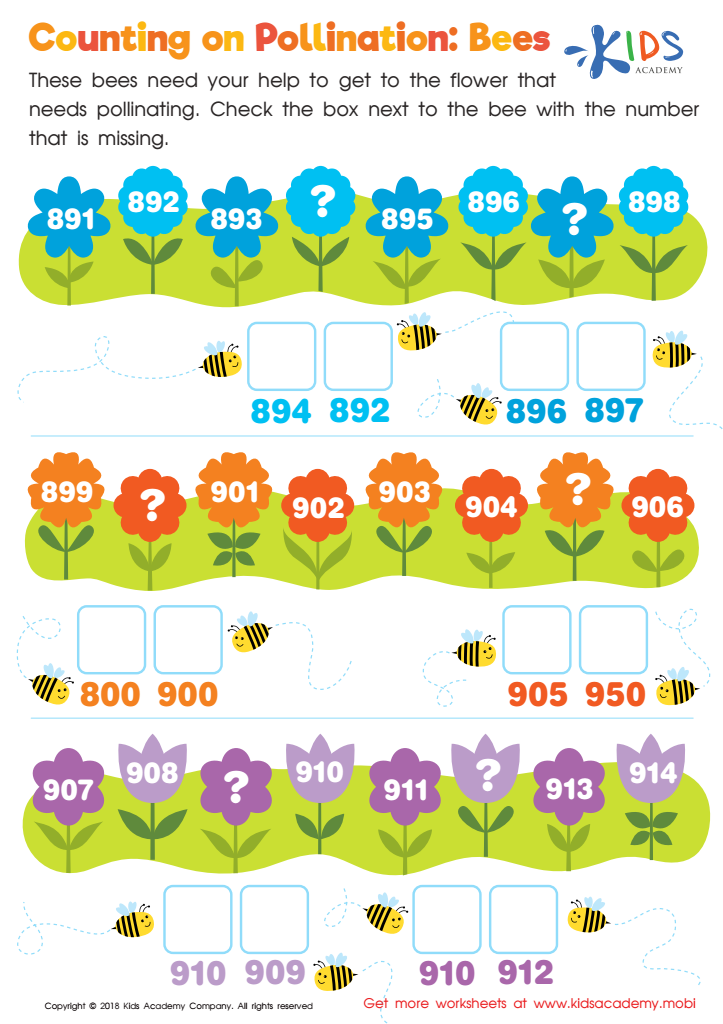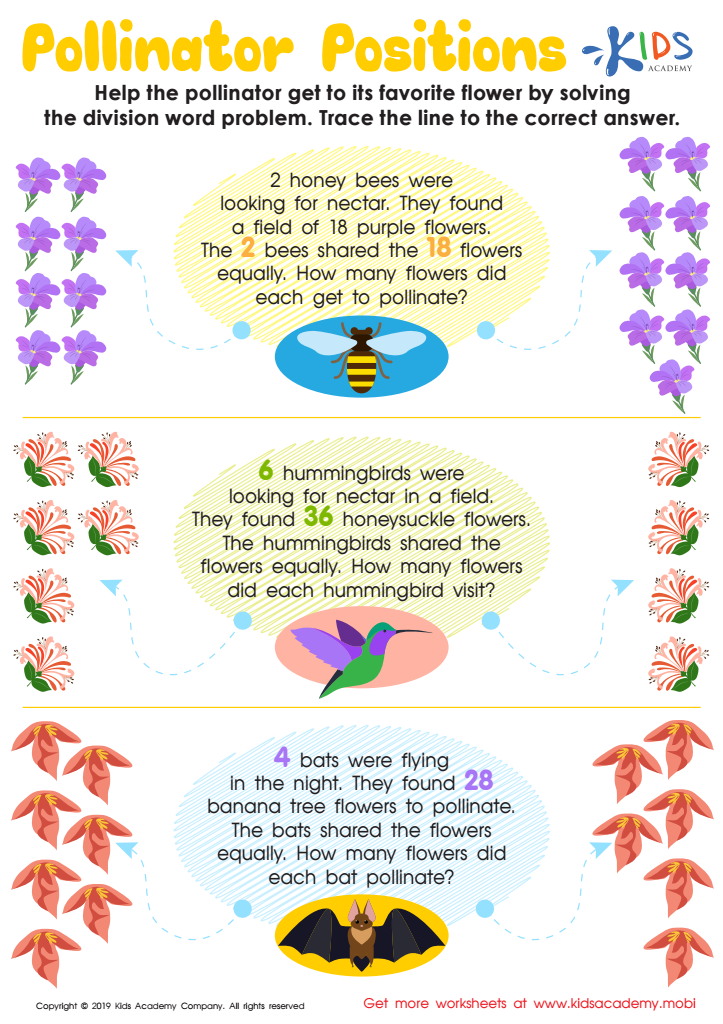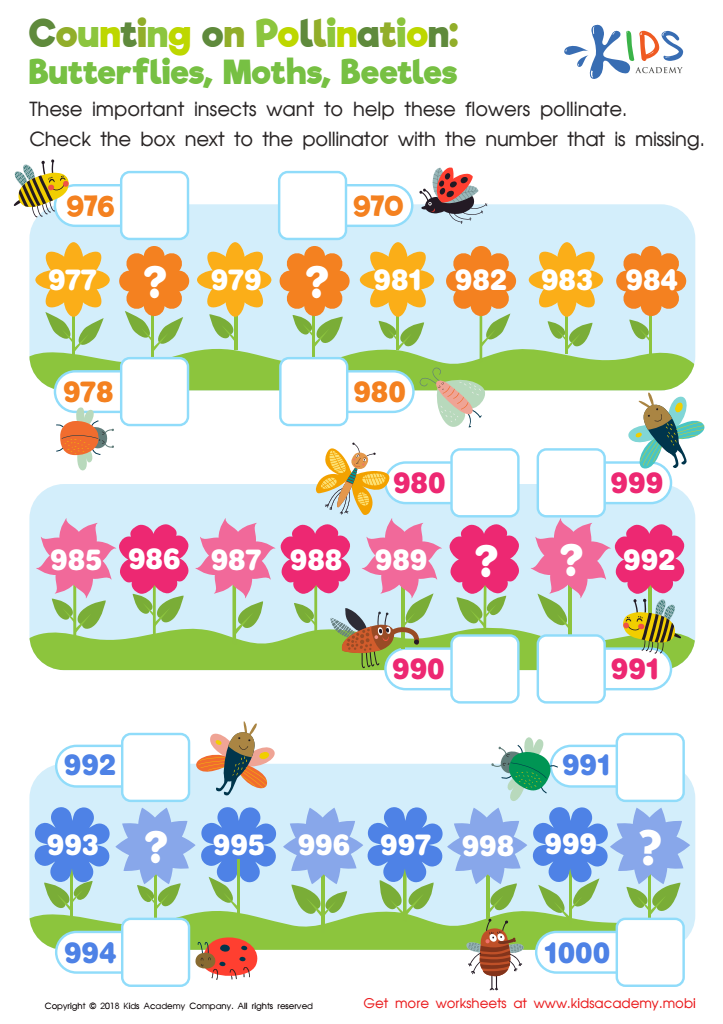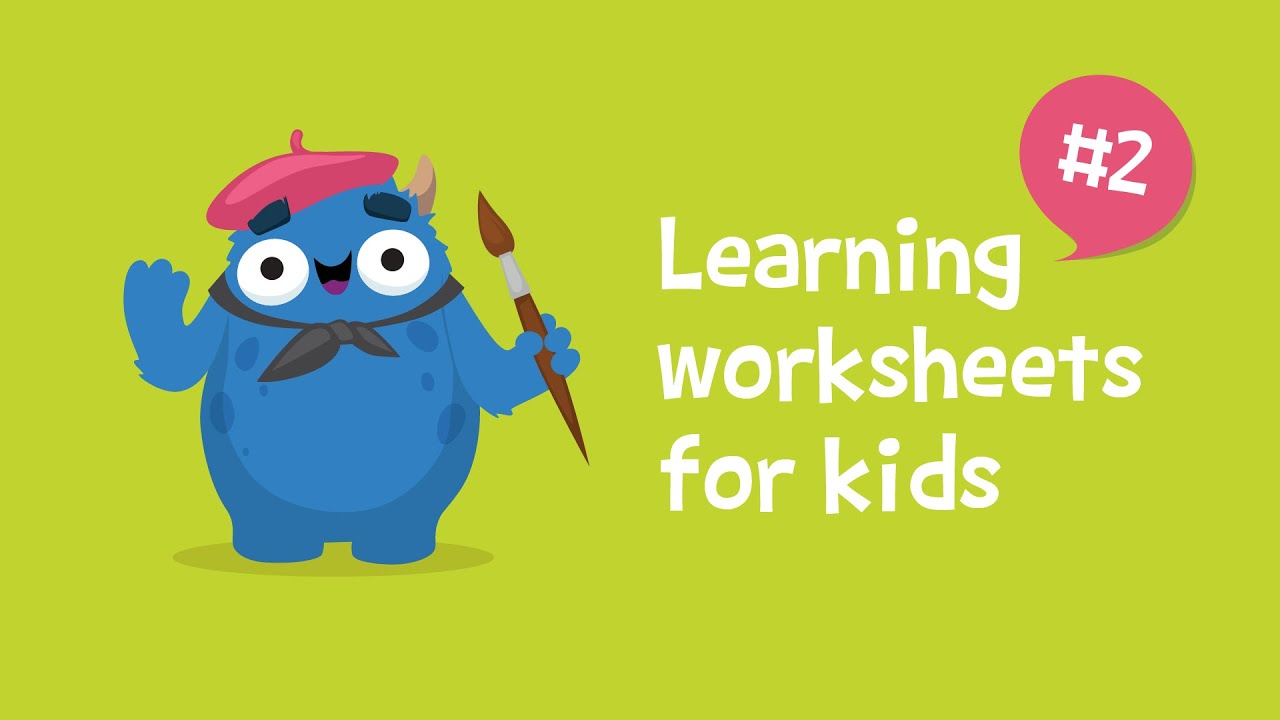Understanding pollination Math Worksheets for Ages 3-8
3 filtered results
-
From - To
Discover our engaging "Understanding Pollination Math Worksheets" designed for children aged 3-8! These worksheets seamlessly combine the fascinating world of pollination with essential math concepts, making learning both fun and educational. Your little learners will explore basic math skills while understanding the vital role pollinators play in nature. Each worksheet features vibrant illustrations and age-appropriate activities that encourage creativity and critical thinking. Perfect for preschoolers and early elementary students, our worksheets will enhance math fluency while fostering a love for science. Help your child develop vital skills with these interactive resources that make learning about pollination a delightful experience!


Counting on Pollination: Bees Worksheet


Pollinator Positions Worksheet


Counting on Pollination: Butterflies, Moths, Beetles Worksheet
Understanding pollination math is crucial for both parents and teachers, especially for children aged 3-8, as it intertwines essential life science concepts with early mathematical skills. First, pollination is a fundamental process that supports the growth of many plants, including fruits and vegetables that children consume daily. By introducing pollination math at a young age, educators can foster a connection between nature and mathematics, encouraging curiosity about the environment.
Moreover, engaging in activities like counting flowers that need pollinating or measuring the distance between bee hives and flowering plants can make math tangible and fun. These hands-on experiences help young learners develop critical thinking and problem-solving skills. Additionally, understanding pollination can instill environmental awareness and foster a sense of responsibility toward preserving biodiversity.
By incorporating concepts of pollination into early math lessons, parents and teachers facilitate a holistic learning experience. This not only enhances mathematical understanding but also promotes scientific literacy and environmental stewardship, preparing children to be informed citizens. Ultimately, learning about pollination math nurtures a love for learning, equipping children with knowledge that links math to real-world applications and ecological awareness.
 Assign to My Students
Assign to My Students




.jpg)


.jpg)












